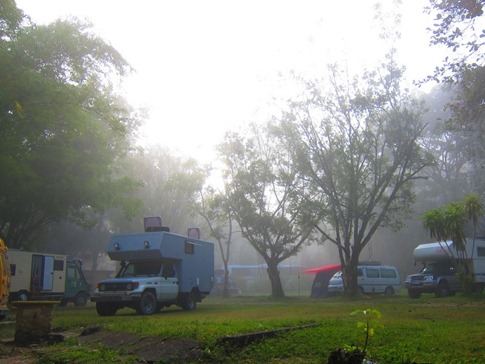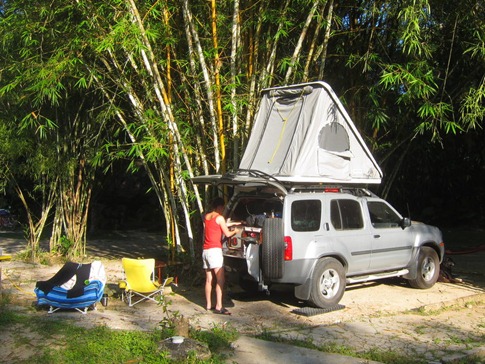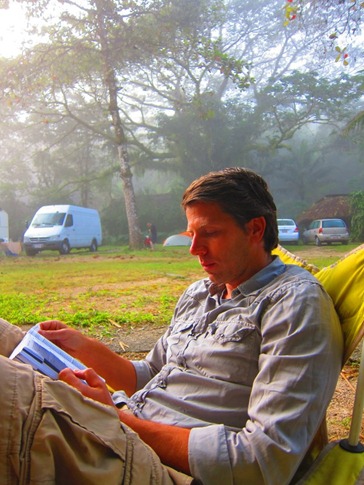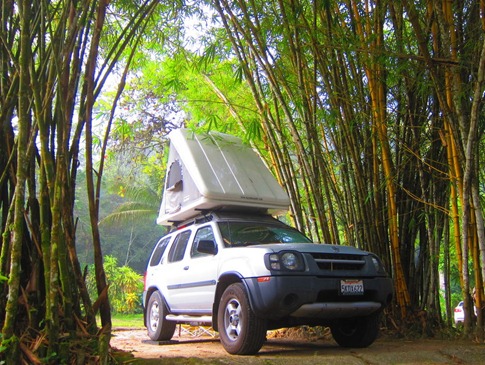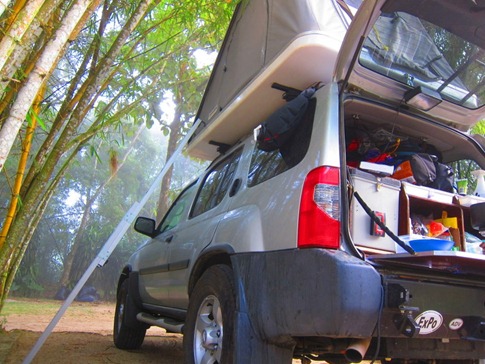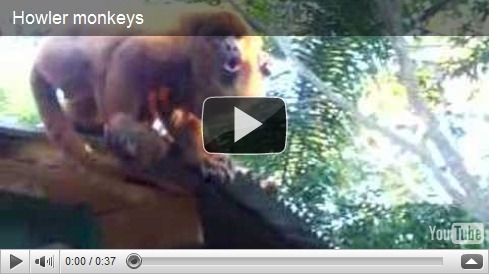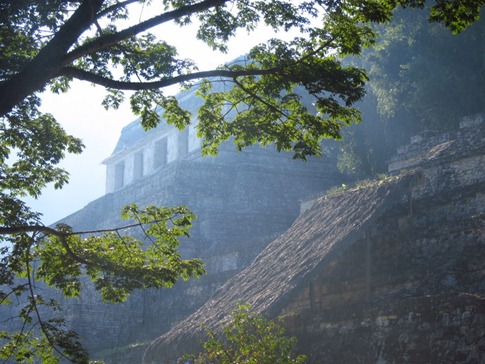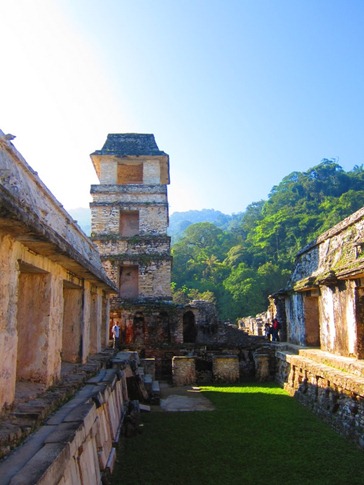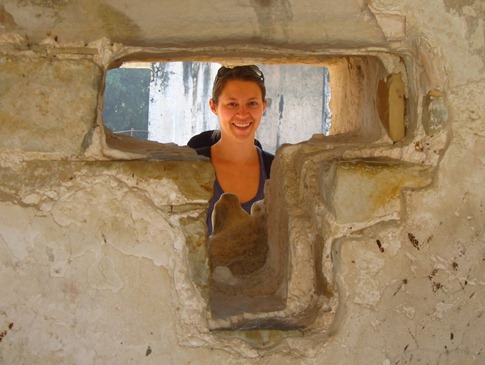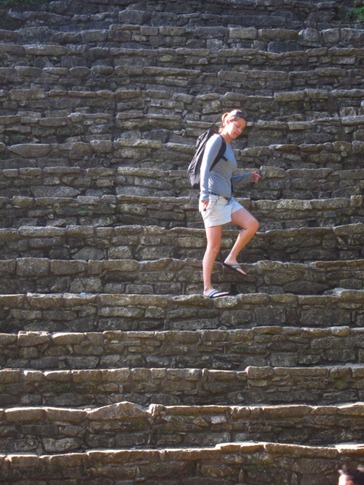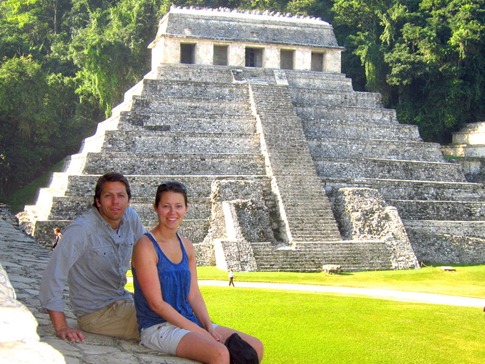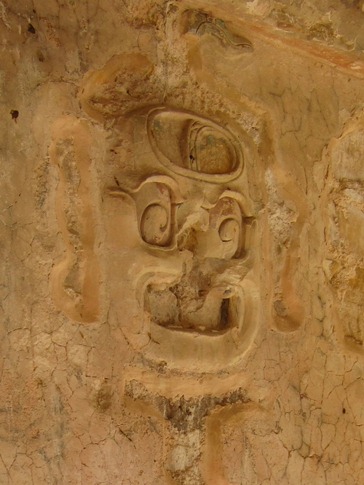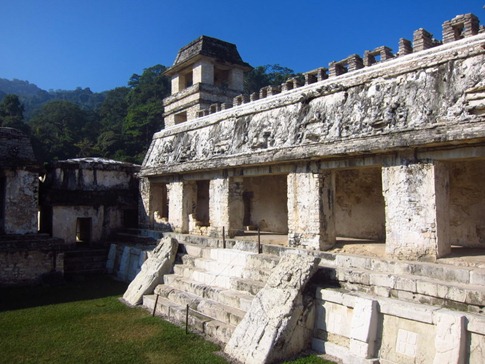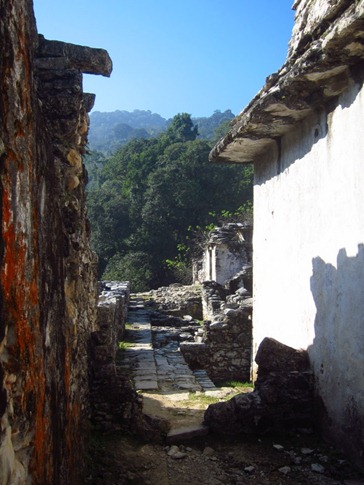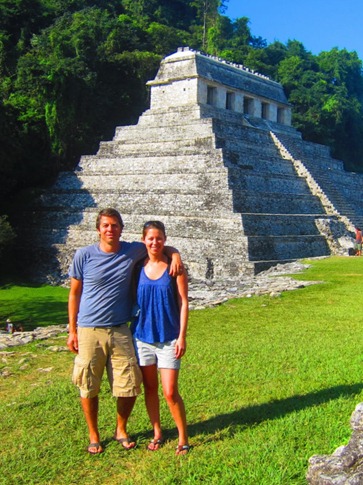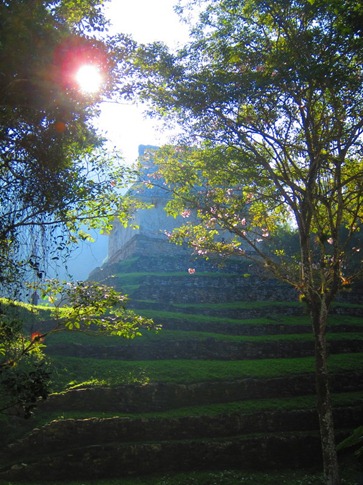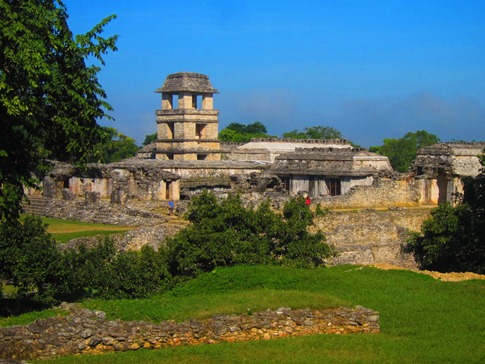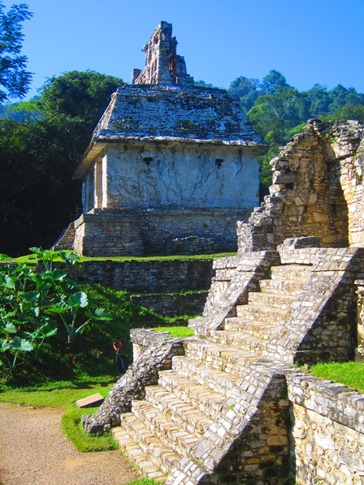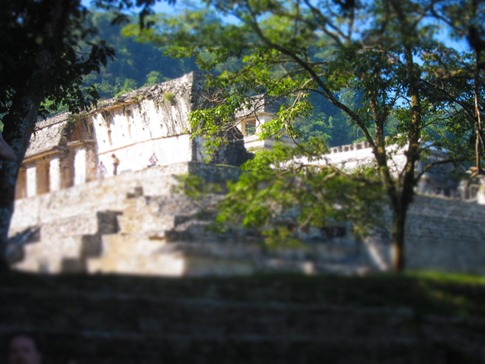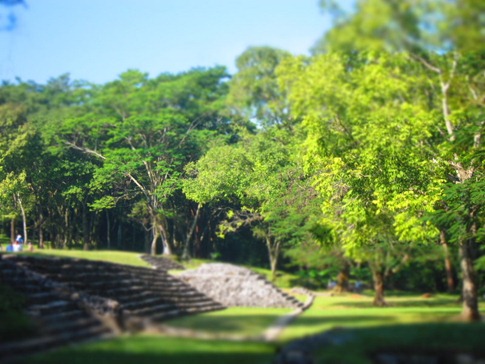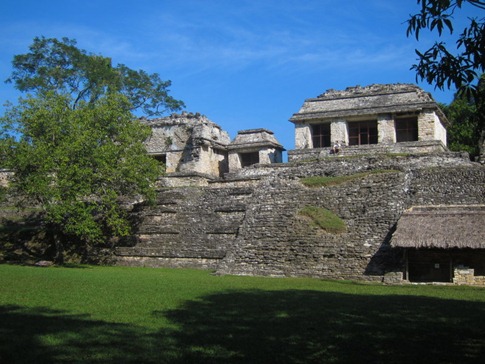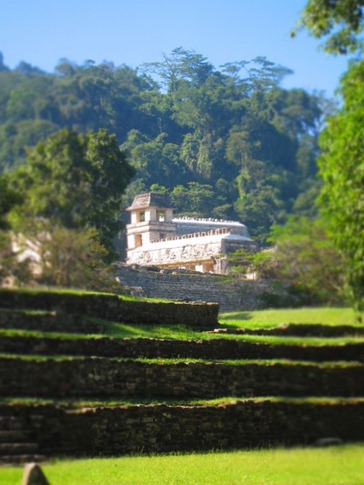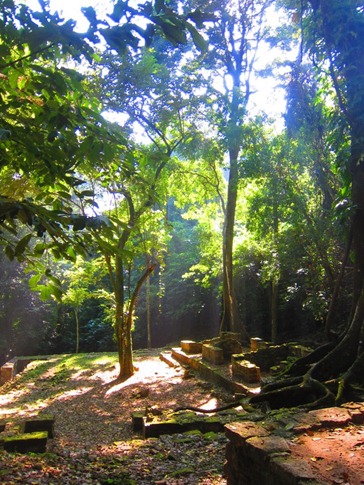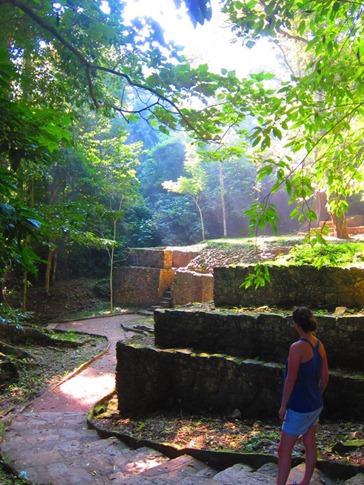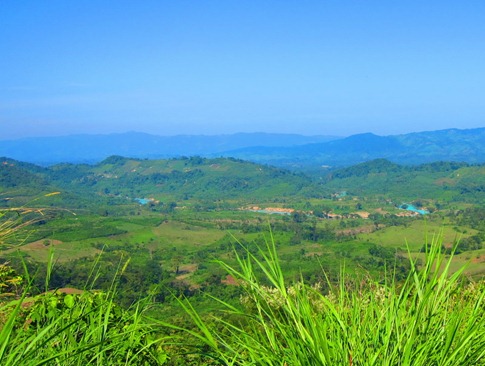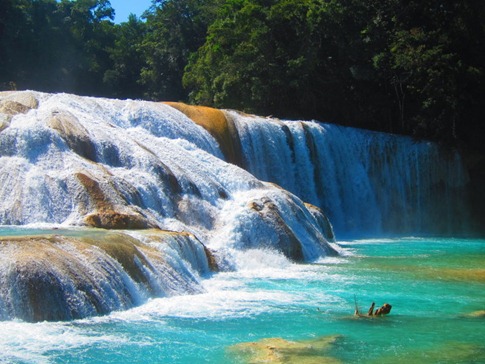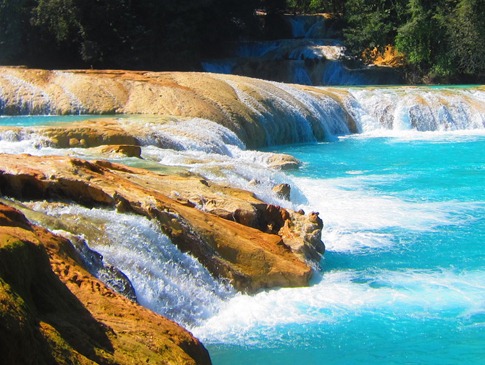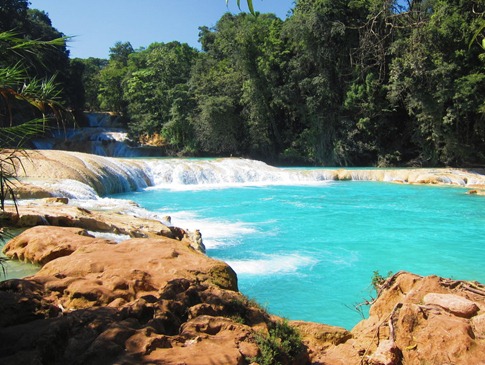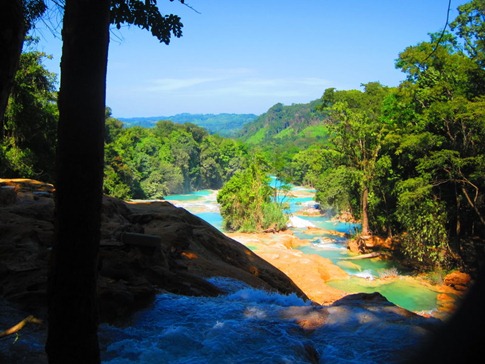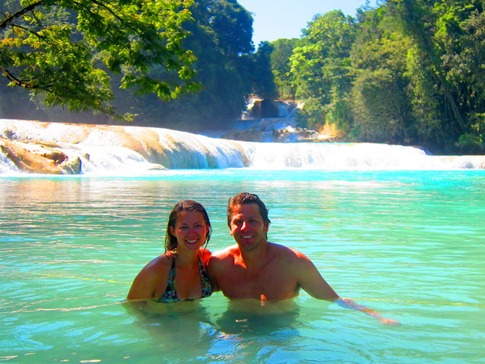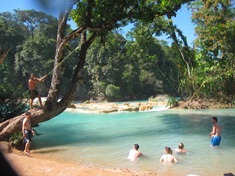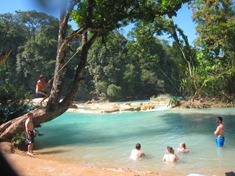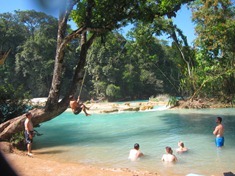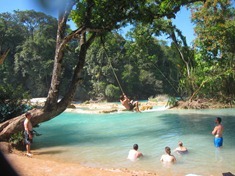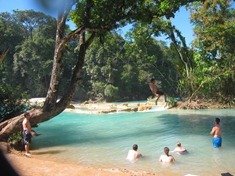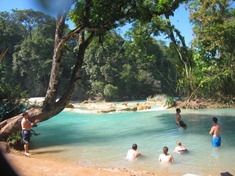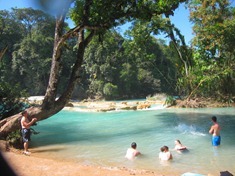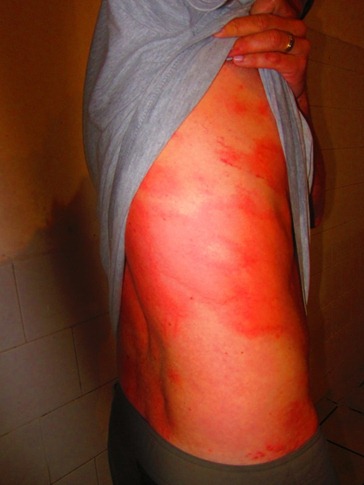The bigger one stepped in front of the truck, hand extended in an unflinching "stop" gesture while the other pulled a rope tight across the road. We’d been warned about roadblocks on Highway 199 between Ocosingo and Palenque, the Lonely Planet even noting that holdups had been weekly occurrences in the past. The warning had come up again among campers in San Miguel de Allende and at that time, we’d pretty much decided it wasn’t worth going there if there was any chance of something happening.
The Ejercito Zapatista de Liberacion Nacional (EZLN) had occupied San Cristobal de las Casas in 1994, claiming independence from the Mexican government in protest of trade and development policies, like NAFTA, that it felt continued a pattern of exploitation of indigenous peoples and their land in the Chiapas region. Though they were quickly forced by the Mexican military to retreat back into the jungles, their leader, Subcommandante Marcos, who we’d heard about our first night across the border at the Rancho El Penasco, became a powerful symbol for the movement as it gained support among the local indigenous people and even on the internet which eventually lead to a tentative entry into the established party system in Mexico.
The next ten years were anything but stable with the EZLN increasing its influence in small pockets of the highlands in eastern Chiapas while the government led secret operations to destabilize them, including the massacre of 45 people in a village north of San Cristobal. Meanwhile, the EZLN continued efforts to win the people over by setting up schools and clinics, though in increasingly remote regions where they could avoid outside interference.
Most recently, the Zapatistas have emerged back into the light with a renewed political campaign targeting all of Mexico’s underserved populations and promising protection from invasive practices like land development and, here’s the kicker, ecotourism. And along this remote stretch of highway running through the indigenous highland villages, past spectacular waterfalls on the way to the ruins of Palenque, members of the movement have at times taken it upon themselves to extract what they see as a “fair toll” from tourists.
We’d had to slow down for the tope and with the rope now taught across our path, there was not much we could do as the one who seemed to be in charge approached the driver's side window, speaking in rapid Spanish we could not understand. We tried to be confident, making it clear we would not give into their demands, inching the truck forward whenever there was a little give in the rope. They repeated their demands, louder this time, but we continued to refuse. We were at a stalemate. Someone was going to have to give.
Finally, the 5-year-old boy holding the rope caved, accepting that we weren't going to buy any of the mini bananas his 7-year-old sister was holding up to the window, and dropped the rope. I hit the gas, happy to be out of their with our lives; though afterwards we realized that it would have been nice to have some bananas.
Actually, when we’d asked about the road to Palenque at the hotel in San Cristobal, they told us that there were Zapatista roadblocks from time to time but that 5 or 10 pesos of “ayuda” was all they were looking for. Like most of the warnings we’d heard about traveling in Mexico, this one was based on facts, but old ones, with just enough truth to keep the rumors going. In most cases, we’re finding it challenging to find actual cases of anything bad happening to travelers using basic common sense (ie: not getting drunk and loud at bars, flashing money around, traveling at night, camping in ill-advised locations, buying or using drugs, etc).
In Palenque, we pulled into the Mayabell and down the two rows of sites occupied by a combination of “overland assault vehicles,” often six-wheeled behemoths that look out of place to us anywhere but crossing the Sahara, and hippies in converted school buses, a few of which were starting to grow roots (the buses). We stepped out of our air-conditioned cocoon, like we’d trapped the crisp mountain air of San Cristobal inside the truck, and found ourselves immediately smothered by a thick blanket of jungle humidity.
After visiting with some Canadians in a Westfalia, we met a couple who drove down from Martha’s Vineyard in an unmodified Dodge Sprinter and promptly told them about Tree, Stevie and Kiki (http://sprinterlife.com) who are a few days behind us in a “tricked out” Sprinter. Noting that Ann seemed to relax as soon as she heard their familiar Boston twang, I made a note to add more Car Talk’s to the podcast rotation. We played a few rounds of dominoes by the light of the lantern before crawling up into the tent for the night.
The screams started around 10 pm. Not childlike screams or high-pitched like those in a bad horror movie; These were the screams of tortured souls clawing at the fabric between their world and ours in a breathy roar that pleaded for acknowledgment while threatening anyone who dared. At least that’s what the howler monkeys sounded like to me. See for yourself (not our video):
The ruins at Palenque emerge out of the jungle mist, somehow making it easier to picture the city at its peak in the middle of the 1st century. In addition to the palaces and temples with more ceremonial designs perched on a few levels in a clearing, a trail winds down into a hollow with foundations of more simple habitations. A colectivo from just outside the Mayabell winds past the lower entrance to the upper where you can buy tickets and walk downhill through the site.
The first bite was just above my wrist. I felt a pinch and smeared a tiny ant as I instinctively smacked the area. After unconsciously scratching it for 10 minutes, a welt started appearing like an undersea volcano slowly forming an island. In the car on the hour drive to the waterfalls at Agua Azul, I began scratching my armpits, eventually noticing similar cauliflower-shaped hives developing. By the time we reached the parking lot, the insides of my legs and lower back were erupting as well. I took Benadryl and immersed myself in the cold spring water for half an hour before the reaction started to subside. What was that little ant?
Agua Azul was a nice day trip though there wasn’t much to do besides dip in the water behind ropes separating us from the main waterfalls, which were quite stunning. In hindsight, we probably should have just given ourselves a little extra time between San Cristobal and Palenque and made a side trip on the way. But while out, we stopped at the supermarket and grabbed some food for dinner and general staples to have in the truck.
Back at the Mayabell, ants had discovered the garbage we left hanging from the roof tent ladder propped up against a stand of bamboo and had formed a four lane highway between it and a nearby nest. I promptly got bitten, popped another Benadryl and headed for the camp pool fed by the cold jungle stream to slow the reaction while Ann cleaned up the mess. After an antihistamine-powered nap in the hammock, I rallied for some miscellaneous truck maintenance. First up was rotating the rear mounted spare tire to minimize sun damage during which I realized that the nuts I’d used were metric and would have required getting out the whole tool kit the first time we had a flat. I replaced them with some spares which should make things much easier should the need arise. I also rewired the cradle for the rechargeable Maglite which had been kicked loose and found a suitably out-of-the-way location for a hide-a-key I’d been uselessly locking in the truck with the rest of our valuables. After a productive afternoon, we started making a feast with our new groceries; I grilled chicken breasts and made a sauce with with diced tomatoes and sautéed garlic while Ann steamed some broccoli and made rice.
That was about the time I got bitten the third time, causing me to point my headlamp down to see I’d been standing in a river of them: red ants. Fire ants. At that moment I didn’t know that they bite first with sharp fangs and then inject an alkaloid venom which, while tolerated by some, will result in a more broad reaction in about 50% of people and anaphylaxis in 1%. I also didn’t know that they are known to be aggressive and can bring down large mammals with repeated stings.
I did know that the reaction was starting again and moving much more quickly than before. I took my third Benadryl of the day and walked in the dark down to the pool where I shivered in the inky black jungle water for 20 minutes. Only this time, the reaction kept coming. Feeling a tingling tightness in my neck and face, I went to the lights of the bathroom to find that the hives, raised red areas with jagged edges that felt warm to the touch and even warmer on my skin, now covered my entire upper body and and were indeed moving higher. At Ann’s insistence, I used our two bars of coverage to place a cell phone call to my brother Mike, a doctor back home. No answer. I tried again. And again.
We had options; Ann took down the hammock blocking the exit to our site and organized a few things in the truck in case we needed to find a hospital. We also had an epi-pen that Kim and Alex had given us in San Pancho after a paramedic friend had brought a few extras on his last visit; We’d all had a good time jabbing the “practice” one into our thighs, imagining what the real thing would be like.(Thanks again for that, guys.) But while my neck and face were warm and swelling, I wasn’t having any difficulty breathing or chest pain and felt like the reaction might have run its course.
A fourth Benadryl and an hour later and the swelling was subsiding. Convinced it was over, I fell into a deep sleep, exhausted from the ordeal and the high drug load I had onboard. Ann says she checked on me several times during the night to make sure I was breathing and to scan the screens of the tent for any commando ants looking to finish the job.

